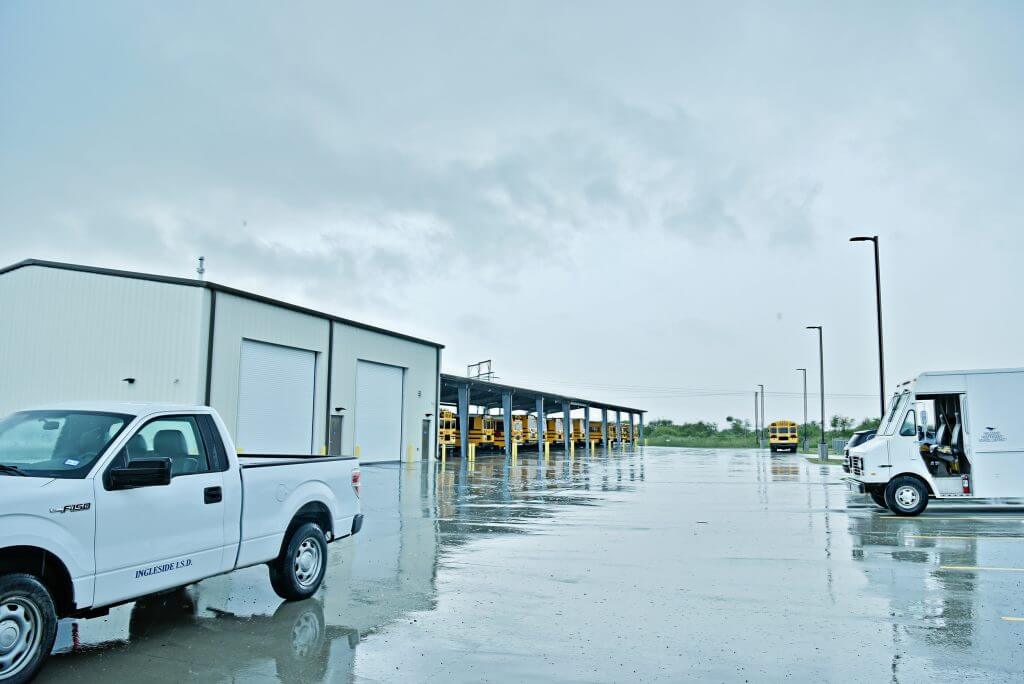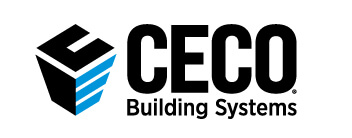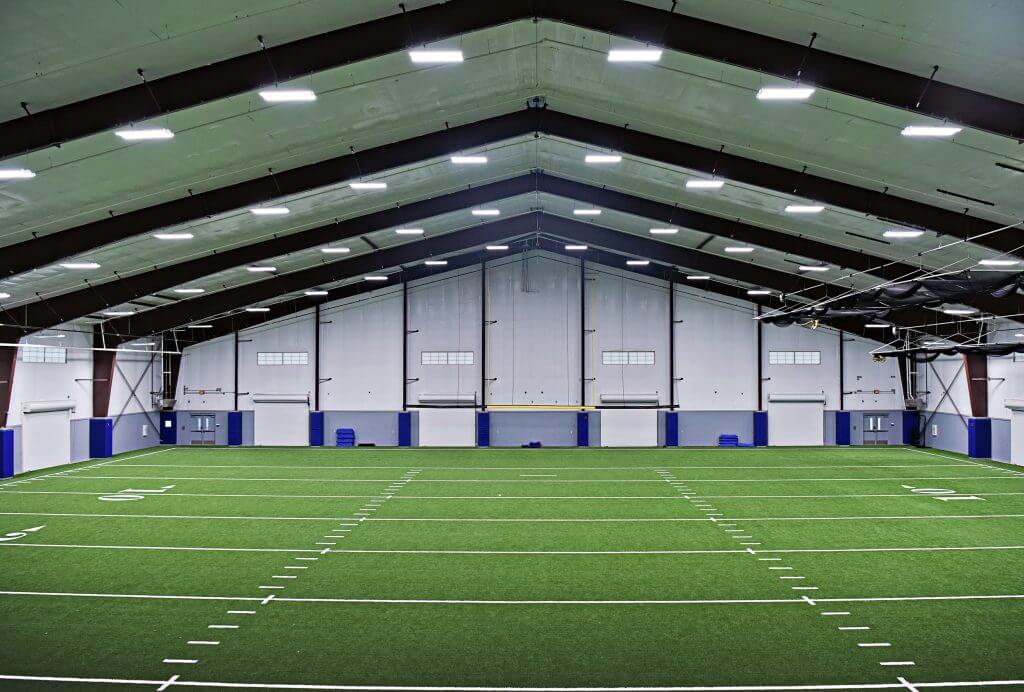Metal Buildings Overcome Hurricane Harvey
Posted on August 16, 2018 by Gregg SmithIt’s hurricane season – and for anyone who has experienced what that can mean for a building, there is reason to take notice. The time to pay attention is during design and construction to create a building that can resist the effects of high winds, torrential rain and other storm effects. In particular, engineered metal buildings have been shown to be particularly resilient in this regard. Steel structures, metal roofing and metal siding are all routinely designed, tested and rated to withstand different levels of severe weather, with most achieving excellent results. Beyond laboratory testing, the 2017 hurricane season provided some real world, dramatic examples demonstrating the strength and resiliency of metal buildings.

Harvey Threatens Ingleside ISD’s New Metal Building Facilities
On August 25, 2017, Hurricane Harvey, a category 4 storm, hit the coast of Texas near Corpus Christi with 130 mph winds and left 250,000 people without power. According to the National Hurricane Center, it ultimately caused $125 billion in damage – more than any other natural disaster in U.S. history except Hurricane Katrina in 2005. Hurricane Harvey affected 13 million people from Texas through Louisiana, Mississippi, Tennessee, and Kentucky with at least 88 people losing their life as a result of the storm.
Just 12 days before Harvey hit, on August 14, 2017, a metal building project was completed, which was unknowingly in the direct path where the hurricane came ashore the following week. The Ingleside Independent School District (ISD), on the northern side of Corpus Christi Bay, chose to use Ceco Builder Weaver & Jacobs Constructors, Inc. to provide metal buildings for their new High School Sports Complex and Maintenance Building. The project included a 40,000 square foot indoor football practice facility, a 15,000 square foot maintenance facility, and a 20,000 square foot bus barn all comprised of the SuperLok® standing seam roof system and PBR wall panels.
Fortunately for most Texas building owners on the Gulf Coast, the Texas Department of Insurance has some appropriate requirements for wind resistance in buildings in order to be eligible for property insurance at favorable rates. In the case of the Ingleside ISD, the design criteria was for a T-1 designation able to withstand 140 mile per hour winds. When Hurricane Harvey tore through the area, the engineering, design, fabrication, and construction were all put to the ultimate test with sustained winds approaching that design limit.
How did the project do? The school district personnel and the contractor went and assessed the property after the storm. To their great relief and delight, all of the buildings were fully intact. No fasteners came out, no roof or siding panels were damaged, and no breaches to the building enclosure were found. The only damage determined was to a single downspout on one of the buildings which was quite easily repairable. The outcome of this project is a testament to the truly durable nature of metal buildings.
To find out more about the best practices and ways to protect your metal building, especially during hurricanes, contact your local Ceco representative.


